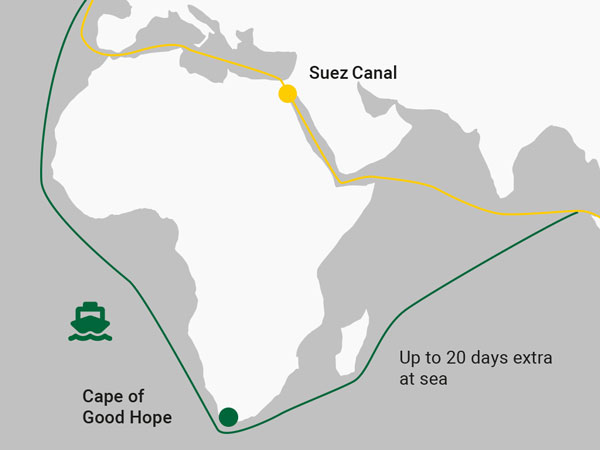
Longer Sea Routes Increase the Risk of Container Moisture Damage
- Jul 16, 2025
Global shipping routes are shifting: vessels are increasingly diverting to longer paths – particularly between Europe and Asia. This has clear implications for transit times and the protection of moisture-sensitive cargo.
The global sea freight landscape is undergoing major change. Due to ongoing instability in the Red Sea region, many major shipping lines have permanently rerouted their vessels. In many cases, the traditional route via the Suez Canal has been replaced by the much longer passage around the Cape of Good Hope – both for exports from Europe to Asia and for shipments travelling in the opposite direction. According to the World Shipping Council, container traffic on the Cape route increased by a full 191 percent in 2024 compared to the previous year. What began as a temporary workaround has now become the new normal.
This alternative route significantly increases overall transit time – in some cases by up to 20 days. Depending on the shipping relation, this can mean nearly doubling the time spent at sea. The extended duration not only affects delivery schedules but also dramatically raises the risk of moisture damage inside containers – leading to issues such as mould, corrosion and softened or collapsed carton packaging.
This is where SeaDry, the high-performance container desiccant from ThoMar, comes into play. It impresses with over ≥ 250% moisture absorption capacity under real conditions over more than 60 days and ≥ 300% under extreme conditions ⓘ and reliably protects sensitive goods – even under fluctuating climatic conditions and on particularly long sea transports.




